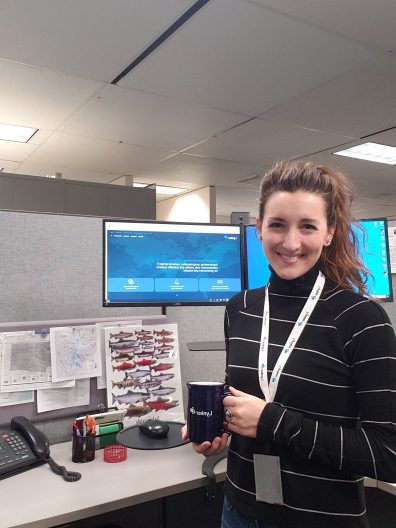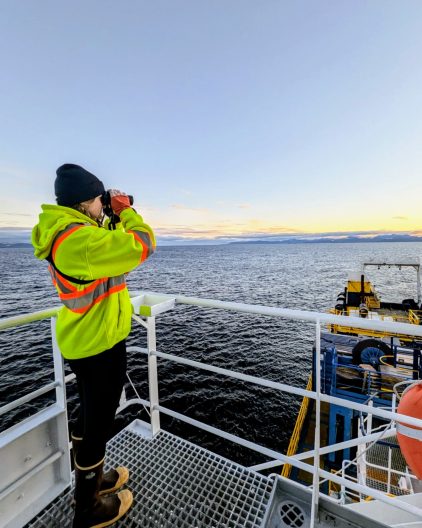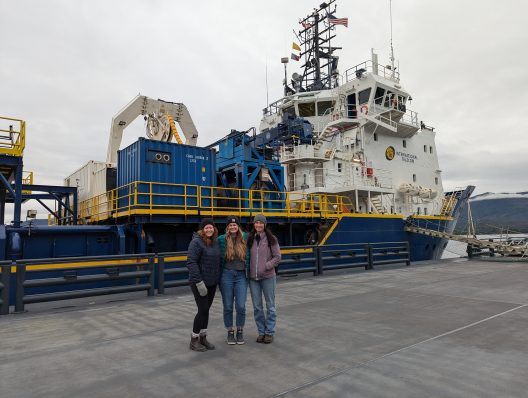Cutting-edge Disciplinary and Interdisciplinary Research by SMEA Alumni
From monitoring humpbacks in Alaskan waters to shaping electric vehicle policy in Washington State, SMEA Alumni are actively leading and supporting cutting-edge research across environmental sectors. While their roles vary, they all share a commitment to interdisciplinary work and a passion for applied, real-world impact.
Ryan Swanson (SMEA class of 2019) is an environmental scientist at Environmental Science Associates (ESA) and conducts research for offshore infrastructure projects like tidal energy installations, fiber optic cables, and underwater battery systems. His work supports federal assessments under the Endangered Species Act and involves evaluating how projects may impact marine species and habitats. “A lot of my job involves digging into the scientific and grey literature to find relevant studies to use in analyzing potential project effects on listed species and habitats”.Writing reports 60-80 pages long, Ryan’s work is used in consultations with the National Marine Fisheries Service (NMFS) and U.S. Fish and Wildlife Service (USFWS) to determine the impact and effect of listed species and their habitats.
His advice to SMEA students:
“My biggest piece of advice would be to start looking at the different types of possible careers out there, now. It is never too early to start looking at the types of jobs and opportunities that may be available based on your specific interests, and then do what you can to get experience (e.g., internships, work study, volunteering, etc.).
Related to that, keep an open mind and try out various types of work. At least half of the roles I have worked in, I had never heard of before trying them out. I just thought, “That sounds interesting,” and gave it a shot. This very much helped me to determine better what my professional interests would be, and just as importantly, what they are not.
Lastly, if you decide that your interests change, do not be afraid to shift gears and go after different opportunities; i.e., you do not have to stay in a role or field if you realize it may not be a good fit for you.”
Hilary Polis (SMEA class of 2016) is the Director of Transportation Electrification at Opinion Dynamics, an independent consulting firm, where she helps utilities and commissions understand how electric vehicle programs impact people and the power grid. Her team’s research for Puget Sound Energy led to the creation of the Flex EV Program, which encourages EV drivers to charge during off-peak hours. This program is not implemented and has thousands of participants. Her work exemplifies how behavioral science, advanced data analytics, and energy policy can come together to support a more sustainable future.
Her advice to SMEA students:
“My biggest piece of advice to incoming students is to seek out opportunities to attend and speak at conferences. Conferences are a great opportunity to u
nderstand how your work fits in with the broader landscape of your field, and communicating your results to a broader audience increases the impact of your work.”
Celeste Barnes-Crouse (SMEA Class of 2019) recently joined Environmental Science Associates (ESA) and works as a Senior Environmental Scientist on the Marine infrastructure team, who supports infrastructure projects by conducting fieldwork and wetland assessments. Her research informs regulatory compliance and environmental planning. This involves traveling to project sites to determine the presence, type, and size of the wetlands using plant identification, soil samples, and GPS technology. Celeste’s research helps characterize a site’s baseline conditions to inform environmental compliance throughout a project’s lifespan.
Her advice to SMEA students:
“My advice to new grad students is to embrace your curiosity and not stress about finding a specific specialization right away. Early on, I felt pressure to settle into one niche to be marketable after graduation. But the truth is, I loved learning about a wide range of topics and didn’t want to narrow down my focus.
Being a generalist has become one of my greatest strengths as an environmental scientist. My broad perspective enables me to see connections between different disciplines and approach problems from creative angles. The ability to adapt and see the bigger picture has helped me succeed, and I would encourage them to cultivate this mindset as well.”
Kayla Boyes (SMEA Class of 2016) is a contracted science writer at Genwest, an environmental consulting firm in Edmonds, Washington. Her role in assisting research and writing assessments under the Endangered Species Act (ESA) and the National Environmental Policy Act (NEPA) helps manage state, Tribal, and Federal fisheries in supporting salmon health and the Steelhead population.
Her advice to SMEA students:
“My advice to students is to stay curious and to keep asking questions! In my work, fisheries are linked to so many other fields like habitat, hydropower, hatcheries, and many more. Learning about the connections across fields is a great way to improve your work and to connect with colleagues. Seek out mentoring opportunities, and get to know the experts in other fields; there is always more to learn!”
Katie Keil (SMEA Class of 2019) works at ESA with Ryan and Celeste as a Principal Environmental Scientist. Here she engages with a wide range of interdisciplinary environmental projects, ranging from water quality to nationwide environmental permitting. This year, she had the opportunity to conduct fieldwork in Pelican and Yakutat in Southeast Alaska for the subsea telecommunication cables, where she was in charge of recording species listed under the Endangered Species Act, recording species behaviors, assessing any potential environmental disturbance caused by the project, and initiating operational shutdowns when needed to protect the species entering the exclusion zone. One of Katie’s favorite memories was a two-week deployment where she worked with Celeste to record breaching humpbacks, pods of Orcas, Steller sea lions, and many other marine life.
Her advice to SMEA students:
“For new SMEA students, my advice is to say ‘yes’ to as many opportunities as you can. UW offers a wealth of experiences — from spending a summer at Friday Harbor Laboratories studying marine mammals and seabirds to participating in the SAFS Research Derby. Don’t hesitate to collaborate across departments, as your peers can be just as valuable a resource as your professors, and don’t underestimate the power of informational interviews — talking to people working in fields you’re curious about can provide valuable connections and direction as you shape your own career path.”
Connor Lewis (SMEA Class of 2022) works at NOAA as a social scientist in the economics and social science research program. Here, his research focuses on how environmental change, restoration policy, and regulatory processes affect fishing communities across the West Coast. His work has included developing decision-support tools for Washington’s fish passage initiative, creating recreational fishing indices not featured in the California Current’s Ecosystem Status Report, and leading survey-based research on social vulnerability, environmental justice, and landowner participation in salmon restoration efforts. For Connor, the most rewarding part of his role is translating complicated modeling and geospatial analysis for managers and stakeholders navigating tradeoffs.
His advice to SMEA students:
“My advice for incoming students: don’t shy away from ‘soft money’ roles, they often come with more flexibility, faster growth, and a front-row seat to applied research.”



Photos by:
Kayla Boyes and Katie Keil